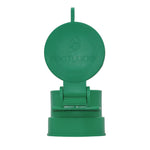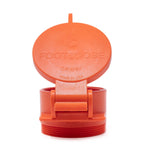You have no items in your shopping cart.
Embark on a fascinating journey into the depths of urban history with "Journey Beneath the Streets: The Intriguing History of Manhole Invention." This comprehensive exploration delves into the origins and evolution of manholes, those ubiquitous circular or rectangular portals that provide access to the vital infrastructure lying beneath our city streets.
Manholes, those circular or rectangular portals to the world beneath our streets, are a crucial component of our urban infrastructure. But have you ever stopped to ponder their origin? The history of the manhole is as intricate and fascinating as the underground labyrinths they lead to.
The Ancient Roots
Manholes can trace their lineage back to ancient civilizations. The Romans, renowned for their advanced engineering feats, developed intricate sewer systems to serve their sprawling cities. These systems required access points for maintenance, similar in concept to today's manholes. While not identical to the modern versions, these early access points were the precursors to the manholes we recognize today.
The Industrial Revolution & Urbanization
The true birth of the modern manhole, however, can be attributed to the urban boom of the 19th century. With the onset of the Industrial Revolution, populations flocked to cities, putting unprecedented strain on urban infrastructures. The need for comprehensive sewage and drainage systems became paramount.
In response to this, Victorian engineers began designing comprehensive underground networks to handle sewage, freshwater delivery, and later on, gas and electrical lines. To maintain these systems, they needed regular access points — hence, the manhole as we know it was born.

Standardization and Safety
By the late 19th and early 20th centuries, manholes became standardized in design, primarily for safety and efficiency reasons. The round shape we often associate with manholes was not merely for aesthetics. A round manhole cover cannot fall through its circular opening, whereas a square or rectangular one might tilt and drop, presenting a danger.
Furthermore, the round design made the heavy lids easier to move by rolling, and they could be easily put back in place without needing to be oriented in a particular direction.
Modern Advances
While the fundamental design of manholes has remained consistent, there have been advancements in materials and safety mechanisms. Today, materials like composite compete with traditional cast iron for manhole cover supremacy, offering benefits in terms of weight and resistance to theft (given the lower resale value of non-metal materials).
Conclusion
Manholes, often taken for granted, have a storied history that mirrors the evolution of urban development. As our cities have grown and our needs have changed, these access points to the world below have adapted and evolved alongside. Next time you stroll through a city street, spare a thought for these historical gateways, offering a portal to our past and ensuring the smooth operation of the urban present.
Discover more tales of urban evolution and engineering marvels on our blog. Dive deep into the history that shapes our everyday lives.









